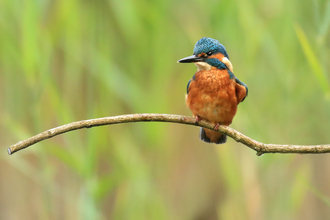LWT conservationists are thrilled to have spotted a host of insects new to the region throughout 2018.
Tantalising evidence of Passaloecus eremita, a species of solitary wasp, was discovered in West Lancashire in October. The owner of Scutchers Acres (a site we are working on in Lathom), noticed some holes in a standing piece of dead wood. The holes were surrounded by dots of hardened resin that are characteristic of this wasp, which buries into dead pine trees and seals the nest-hole with resin, leaving behind these Stone Henge-style deposits.
Passaloecus eremita was historically confined to the South East, so we’ll be monitoring this area closely, especially as Plan Bee Project Officer, Ben Hargreaves, also reported sightings of Stauronematus platycerus. This uncommon and possibly rare sawfly is associated with willows and poplars.
Over at Hightown, in Merseyside, there were records of the silvery leafcutter bee (Megachile leachella), which was previously restricted to coastal areas no further north than Harlech in Wales.
Three new bee species were also recorded at Brockholes Nature Reserve:
- Gwynne’s mining bee (Andrena bicolor)
- Common yellow-face bee (Hylaeus communis)
- Wilke’s mining bee (Andrena wilkella)
And that isn’t all – seven new hoverflies were spotted by eagle-eyed visitors over the summer months.



